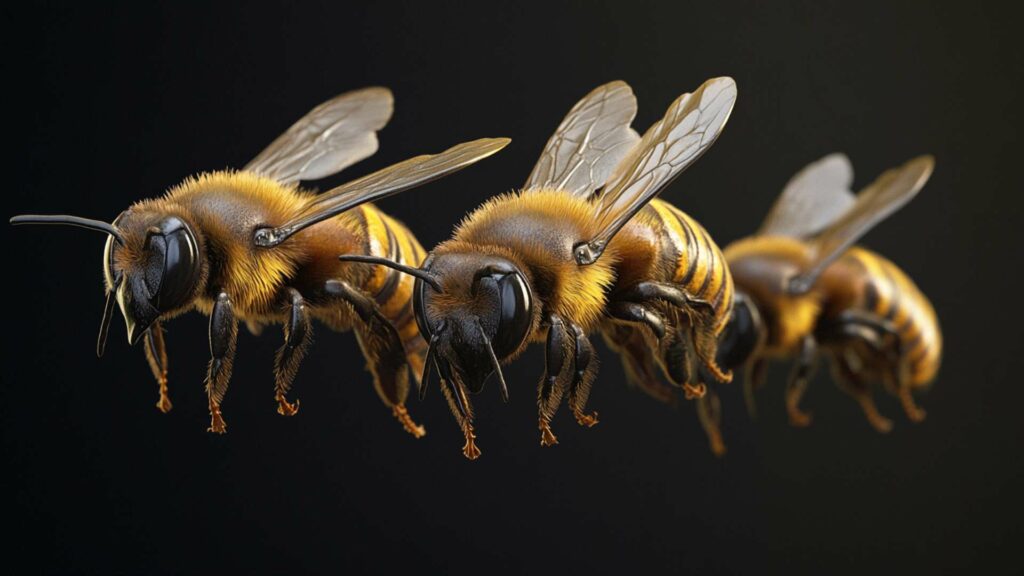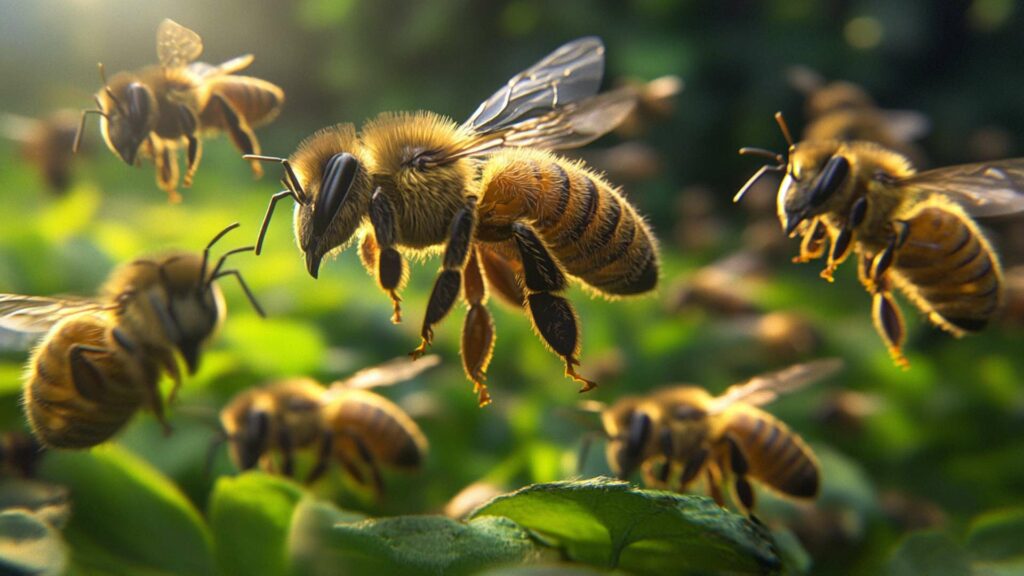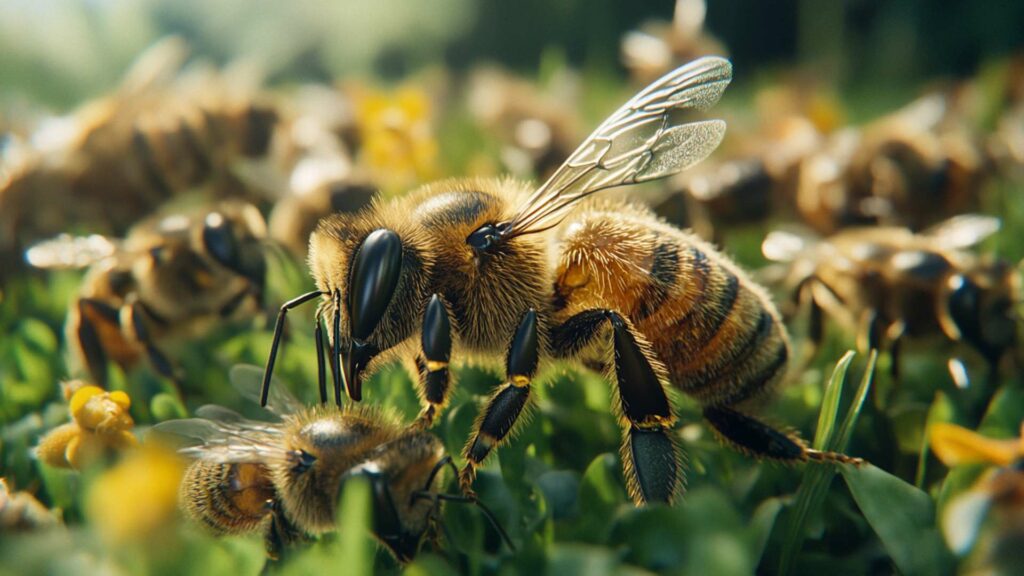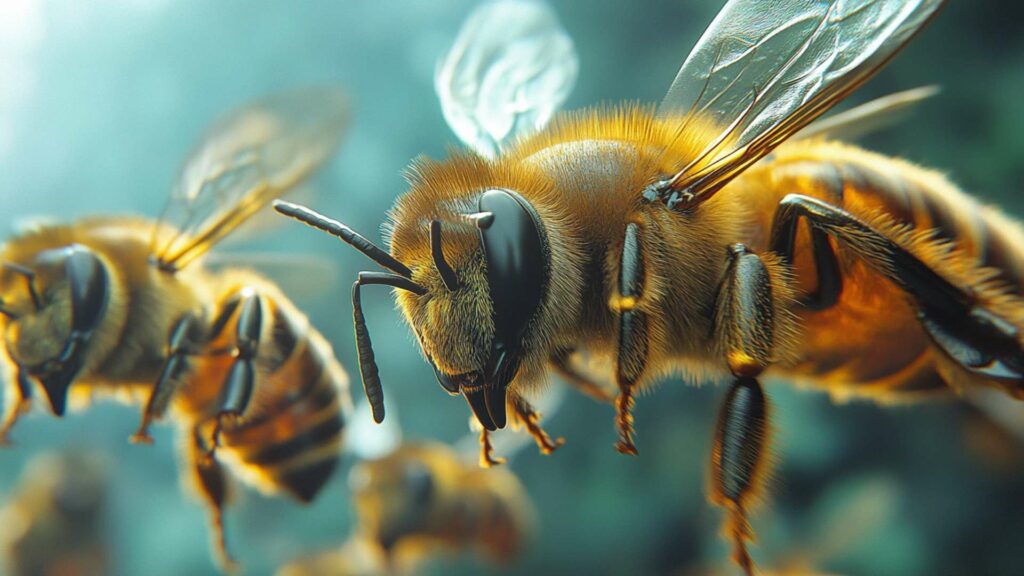Bees and honey have fascinated humans for centuries. They draw us into a sweet and wonderful world. The honey-making process is complex, showing the amazing abilities of these hardworking and industrious insects. They collect nectar from flowers to make the golden elixir. What really captivates us is the important role honey plays in a bee’s life.
We learn about bees making honey when we’re young. We’re amazed at how they turn flower nectar into delicious honeycomb. This is a treat enjoyed globally.
Bees buzzing around, collecting nectar, and making honey fills us with awe. We admire these remarkable creatures. We’re fascinated by how much honey bees live in their colonies, with intricate ways and systems.
Each member of a healthy colony has a specific role. From the queen bee laying eggs, other worker bees collecting nectar and pollen. Honey holds immense importance within this well-organized society.
Importance of Honey in the Bee’s Life

Understanding why honey is crucial for bees requires looking at its role in the worker bee and colony. Most see honey as human food but, bees depend on honey for their main sustenance throughout life. Worker bees work hard, using their long proboscis to collect nectar from flowers. The liquid goes into their stomachs, mixing with enzymes needed for honey. This intricate process highlights the vital connection between bees and the golden elixir.
Back at the hive, they put the precious cargo storing food into hexagonal wax cells called honeycombs. They work together to make honey, which is food for the colony. Honey is more than a protein source. Honey has carbohydrates and essential nutrients like amino acids for the bees.
Honey is the perfect food for honey bees. Honey provides sustenance and nourishment for survival and thriving. Additionally, honey serves as an energy reserve when flowers are scarce. This comes especially during the winter months when cold temperatures make foraging impossible.
In sustainable beekeeping, it’s vital to leave enough honey for the bees’ needs in the hive. Harvesting extra honey must be done carefully and thoughtfully. This is to protect the health and well-being of honey bee colonies. Further ensuring their sustainability in the long run.
Exploring how bees make honey unveils their fascinating world. We appreciate how this sweet substance remarkably sustains them. They gather food from flowers, diligently working to create nature’s treasured delight: honey. The process involves collecting nectar from vibrant blossoms, and transforming it within their hives. This creation is not just food; it represents the essence of their existence. Relish the connection to the bees and their vital role in producing honey, nature’s golden gift.
Gathering nectar from flowers
When we think about bees, we often imagine busy insects buzzing around flowers. Bees play a crucial role in pollination and are also busy gathering nectar. This is known as the raw material for honey. They can find nectar-rich plants using sight, smell, and even electrical signals. These incredible creatures contribute to the intricate dance of nature. They ensure the reproduction of plants through their pollination efforts. Bees serve as essential pollinators. They foster biodiversity and enable the growth of various plant species. Their remarkable skills make them indispensable to the delicate balance of ecosystems worldwide.
They are drawn to bright-colored blossoms and flowers emitting a sweet fragrance. They are also drawn to fewer flowers and to those with easily accessible nectar. Bees can also remember floral patterns, allowing them to optimize their foraging routes. This allows for maximum efficiency in gathering nectar.
Nectar collection techniques
Worker bees collect food for themselves and hive mates by going on many foraging trips daily. They use long tongues called proboscises to get nectar from deep within flowers. While sucking nectar, their rapid wing beats act like tiny floral vacuum cleaners. This helps in picking up pollen grains on their fuzzy bodies. This unintentional pollen collection aids in pollination. This is by supporting the reproduction of various plant species in the ecosystem.
Collecting pollen helps plants when honey bees collect nectar and move it between flowers. A single bee carries only 20-40 microliters (less than a teaspoon) of liquid in its crop. The bee either stores the nectar or brings it back to the hive.
Transforming nectar into honey

Worker bees bring nectar containing about 80% water and sugars. They start the intricate process of storing nectar and turning it into the honey we know. To begin, bees regurgitate a bit of nectar into a honeycomb cell. This is where it will be further processed and stored for the hive’s use during times when food is scarce.
This starts the breakdown of sucrose into simpler sugars—glucose and fructose. An enzyme called invertase does this crucial work. Worker bees’ glands in their heads produce these enzymes. These play a vital role in the honey production process.
Evaporation and water content reduction
After changing the nectar with enzymes, worker bees collaborate to process it more. They vigorously fan their wings, creating air currents in the hive to aid evaporation. This airflow lowers the nectar’s moisture, making it less likely to spoil or ferment.
Hardworking bees persist until most water evaporates, creating honey with 18-20% less water. Bees sense their own honey well’s thickness and viscosity, knowing when it’s just right. This skill ensures the honey stays well-preserved in the hive. The bees meticulously maintain the honey’s quality. This is a testament to their instincts and cooperative efforts within the colony.
Gathering nectar from flowers and turning it into honey is an amazing process. These remarkable insects collect nectar and create honey from many flowers using their specialized tongues. In the process, they inadvertently help plants reproduce by collecting pollen.
Returning to the hives, they use enzymes and evaporation to turn sugars into honey. It’s amazing how these small creatures of bees make honey into a delightful treat we humans treasure!
Honey Storage and Preservation
Creating honeycombs for storage
Worker bees are both skilled beekeepers and architects, constructing honeycombs as storage units. They use wax secreted from their bodies to meticulously fashion the hexagonal cells. These cells make up the comb, showcasing their remarkable skills.
This intricate design serves multiple purposes. Firstly, the hexagonal shape allows for maximum efficiency in space utilization.
Tightly packed cells efficiently save space and provide ample room for storing honey. The geometrically perfect hexagons add inherent structural strength. They also effectively support the weight of the stored honey.
Regulating moisture content in honeycombs
Keeping the right moisture in honeycombs is vital to avoid spoiling. Worker bees use fanning behavior, flapping their wings to control humidity. This helps circulate air in the hive and evaporate moisture from nectar droplets. This can also be from uncapped cells with high water content. This ensures the honey stays fresh and delicious.
Bees keep their honey safe by removing extra water through evaporation. This ensures the honey stays stable and at a safe moisture level.
Honey Consumption and Utilization within the Hive

Bee nutrition and energy source
For bees, honey is not just a delectable treat; it serves as their primary source of nutrition and energy. Adult bees rely on this protein-rich substance as a vital component of their diet.
Bees have enzymes in their digestive systems. These enzymes break down complex sugars in honey into simple sugars. The bees absorb these sugars easily. Also, worker bees use some honey sugar to make royal jelly. Royal jelly is a nutritious secretion. It’s exclusively used to feed young larvae and support queen bee development.
Winter survival strategy
In colder winter months, wild hives must store food for survival as temperatures drop. Bees use a remarkable strategy to store up for winter survival, focusing on their stored honey.
Bees gather in tight clusters, surrounding honey-filled combs at the center colony. They use vibrating flight muscles to generate heat and keep a stable temperature. This protects them from freezing conditions.
Bees use this to survive winter by relying on stored honey as a long-term food source until spring.
Harvesting Honey by Beekeepers

Techniques for extracting honey from hives
Beekeepers use different methods to harvest honey. They aim to disturb the hive and bees with as much honey as little as possible. They prepare for extraction using tools like smokers to calm the bees. They will also use bee brushes to gently remove stubborn bees. They also use extractors which spin frames to separate honey from the comb. Careful handling is crucial to protect the comb and ensure high-quality, pure honey.
Processing raw honey for commercial use
After harvesting, raw honey goes through additional processing before it’s sold in stores. Beekeepers filter it using fine mesh or sieves to remove debris or sugar particles. The filtered honey is then bottled, with attention to proper labeling and packaging. This is to protect its quality and present it in sizes and forms desired by consumers.
Fun Facts about Bees and Honey
Bees are amazing creatures with a fascinating connection to honey. It takes about 2 million flowers’ nectar to make one pound of honey. Each worker bee has a special honey stomach just for transporting nectar to the hive.
Bees work hard, pollinate flowers, and give us honey. They play a vital role in pollination and support ecosystems. Bees’ interest in flowering plants is crucial for their survival.
Bees collect nectar and make honey, a precious resource for their hive. Honey serves various purposes, providing nutrition, energy, and aiding winter survival. How bees collect nectar is crucial for their busy lives.
Beekeepers harvest honey carefully for commercial use, bringing it to our tables. It reflects the unique bond between humans and these incredible creatures. Appreciate bees’ tireless efforts—a nature’s gift nourishing both body and soul.
Address bee problems with D-Termination: Leading Pest Control in Las Vegas!

If you’re dealing with bee issues on your Las Vegas property, rely on D-Termination for expert assistance. Our skilled team specializes in eliminating bee infestations, restoring comfort and peace to your space. Bid farewell to bees—choose D-Termination for effective pest control today!
Reach out to us at 702-919-6310 or visit dtermination.com to schedule your bee control service and reclaim your space from these troublesome insects.
Frequently Asked Questions:
Yes, honey bees often consume the honey they make.
Bees store leftover honey in their hives for future use.
Bees utilize the honey they produce for various purposes within the hive.
Bees that don’t make honey often contribute to other hive activities, such as pollination or hive maintenance.







